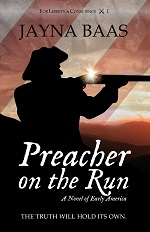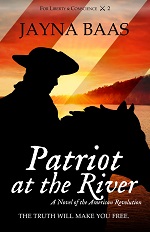A detailed historical narrative with some great characters and gripping action scenes . . . but some flaws as well.
No rating.
It’s rare that I review a book without rating it. When it does happen, it’s usually because I have exceedingly mixed emotions. That’s the case with this classic. Do I recommend it? Yes . . . with caveats.
What you may enjoy about Ben-Hur
This is a fascinating look at what the hopes and fears of Israel might have been like at the time of Christ. It becomes easy to see why so many Jews looked for a Messiah who would deliver them from Rome. It also becomes easy to see the rift between the old ways of the law and the new ways of the One who fulfilled it. This book’s sweeping descriptions of Jewish life and Roman life really provide a backdrop for how biblical history fits against the other history happening at the time.
Ben-Hur is a strong hero, and it’s clear why his story became a classic. I wish we could have followed more closely through parts of his life. Something would happen, and next thing you know, it’s five years later. Large portions of his life are jumped over, and some of those portions would have helped me connect more with his character.
But that gets better as the book goes along. And there were so many other great characters and interactions. Sheikh Ilderim, Simonides, Esther and Iras and Balthasar, Tirzah and Ben-Hur’s mother . . . so much good interplay. (I especially enjoyed hearing Ben-Hur’s mother inspire her son with the tales of Israel’s history.) I would have loved to see more of Quintus Arrius. Messala is an excellent antagonist, and Wallace writes some gripping action scenes.
Like the chariot race. Oh my. I understand now why Anne of Green Gables read it behind her textbook in class!
History and tradition
Wallace did painstaking research for this book, and it shows. (Although he delved too deeply into Egyptian mythology or Greco-Roman religion for my taste.) Some of the descriptions are beyond long-winded, but once I got into the rhythm, I didn’t mind too much. A lot of this book is simply a matter of slowing down and reading it like the classic it is rather than a book written for today’s short attention spans.
In some cases the author leaned very obviously on religious tradition rather than history or the Bible. His reasons for Mary being blond or Christ having reddish hair failed to convince me. The opening scenes with the three wise men are also based on tradition, of course, but I really enjoyed the reminder of how God moved in the hearts of those outside Israel.
That’s what a lot of this book was for me: A reminder. A reminder of what it might have been like to be a shepherd on a hillside suddenly seeing an angel. Or to have leprosy with no known cure. Or to see the crucifixion and feel the earthquake. Or to have one’s world turned completely upside down with the realization that the Messiah’s kingdom and message are not of this world.
So, for a detailed historical viewpoint and a thrilling story about Judah Ben-Hur, read this book.
But is this truly a tale of the Christ?
I was disappointed by the portrayal of Christ, which appeared to be drawn directly from medieval religious art. Long auburn hair, “woman-like face,” and air of stooped sorrow and resignation. Although I believe that Isaiah 53’s description of “no beauty that we should desire him” is in the context of the horrors of the crucifixion, I don’t believe the Bible indicates that Christ looked anything like this portrayal. I would have loved to see him portrayed as looking like a normal man (hence Judas’s kiss to identify him) whose astonishing authority, actions, and attitudes made him a wonder to those around him.
The next part is a bit of a spoiler, so be warned.
I was even more disappointed by the lack of a vital piece of the story of Christ: the resurrection. There’s one brief, early mention of “when the Nazarene was risen.” There’s also a statement that without the resurrection, “Christianity would be an empty husk.” And Ben-Hur does come to realize that Christ is the resurrection and the life.
However, I was really looking forward to “seeing” the resurrection, or at least hearing about it, and it was completely missing. The crucifixion and a mention of “the gloom of the burial” is the last we see of the Nazarene and his mission. That is so sad. Without the resurrection, there is no hope, no new life, no power to walk in the Spirit. It seemed very strange to me that a novel subtitled A Tale of the Christ would leave out the climax of his redemptive work, the very moment that changed the disciples’ lives and changed history.
Is this book for you?
Do I recommend Ben-Hur? Yes, for history-lovers who want to follow the tale of a young prince of Israel under Roman domination. Maybe not so much for those who want to follow the tale of the Christ, although his nativity and crucifixion are gripping.
But it will certainly make you think—what would it have been like to be there?

If you enjoyed this book review of Ben-Hur by Lew Wallace, you might also enjoy my book review of The Good Shepherd by C. S. Forester. Read here on Goodreads, or join my newsletter list for book recommendations, a free short story, author updates, and more.
Do you love fascinating history?
Christian historical fiction series For Liberty & Conscience brings you faith-filled adventures bursting with courageous characters and biblical truth amid the danger of America’s founding. Click a cover for details or see all books here.
Happy reading!

Jayna Baas is the author of Preacher on the Run and director of The Christian PEN: Proofreaders and Editors Network. Learn more about Jayna here or join her email list for more recommendations.



